Southwest Michigan field crops update – June 19, 2025
Sidedress nitrogen applications went out on corn. Early soybeans are starting to flower. Scout for potato leafhopper in potatoes and alfalfa.

Weather
Most of the past week was hot and dry, but yesterday, June 18, brought precipitation and storms to southwest Michigan. Temperatures will pick up moving into the weekend, settling into the 90s for much of next week. Storms are forecast starting Wednesday, June 25, and continuing into next weekend.
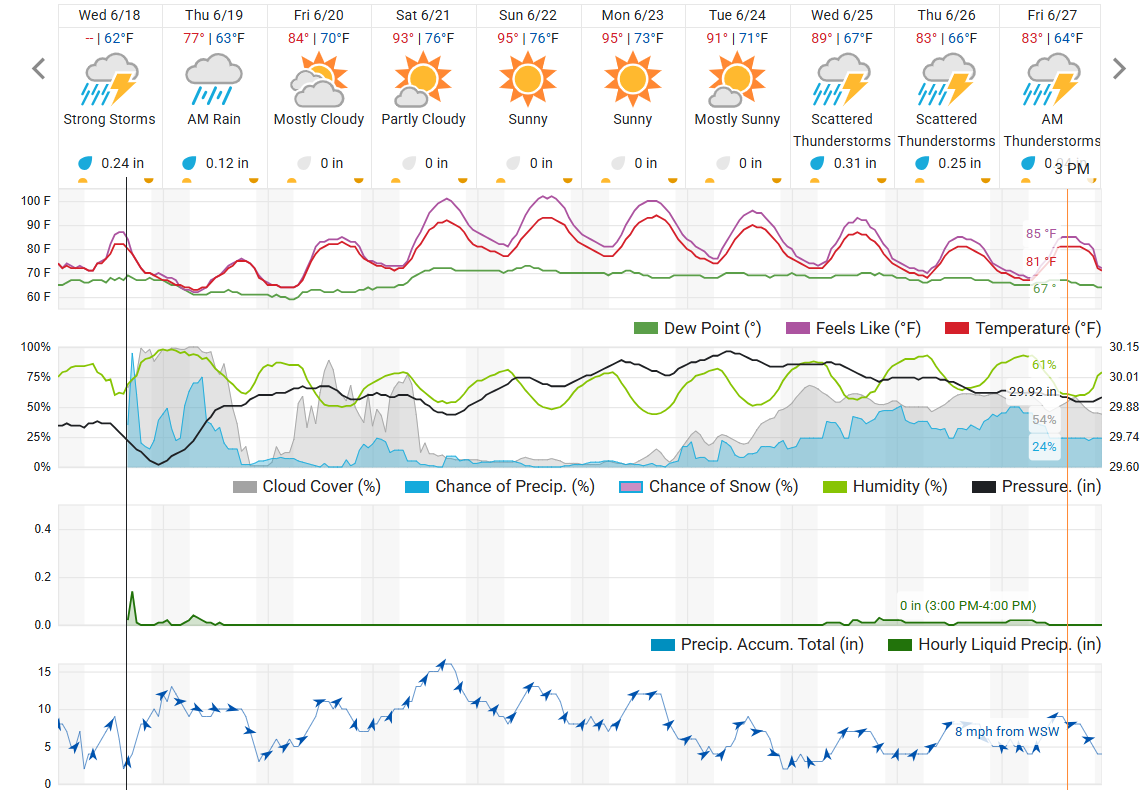

Crops and pests
Soybeans are mostly between V1 and V3. Some early planted fields have plants entering R1 (a flower anywhere on the stem). As flowering draws closer, the window for post-emergent herbicide applications narrows. Glufosinate can be applied until R1, and glyphosate can be applied through R1. Always check product labels before applying.
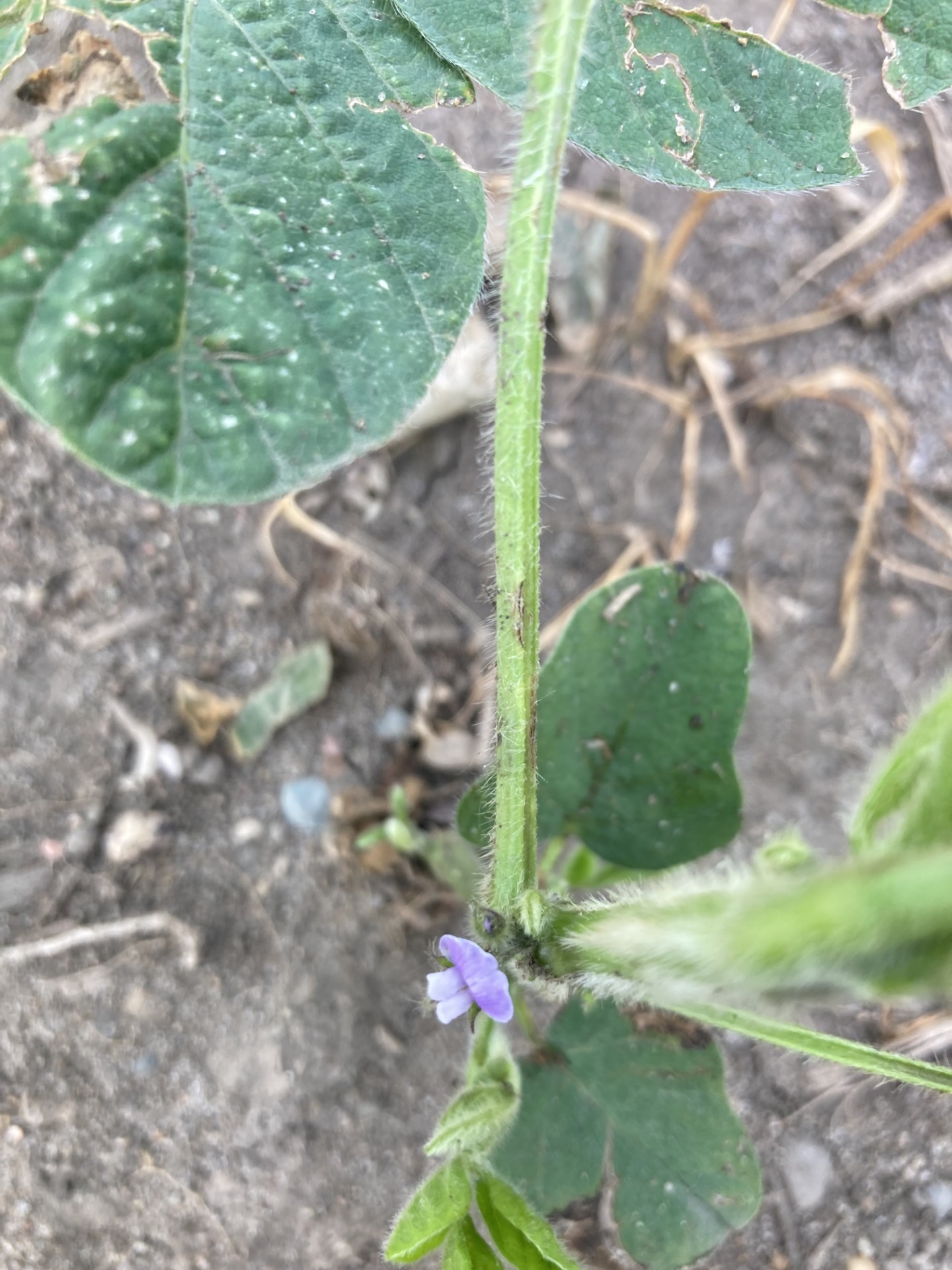
Corn is mostly between V3 and V5. Sidedress nitrogen applications went out in earnest this past week and will continue. Nutrient uptake is highest during V6 to V10. Tar spot was found in a Purdue University research plot in Indiana last week. In the same trial plot last year, tar spot was first confirmed on June 10, but it didn’t reach the ear leaf until July 25. The best timing for fungicide application is still VT to early reproductive stages, and higher temperatures this past week and coming up will slow down tar spot progress.
For more information, read “Tar Spot: What To Look For In Corn And Making An Informed Decision On Fungicide Application” from Purdue.
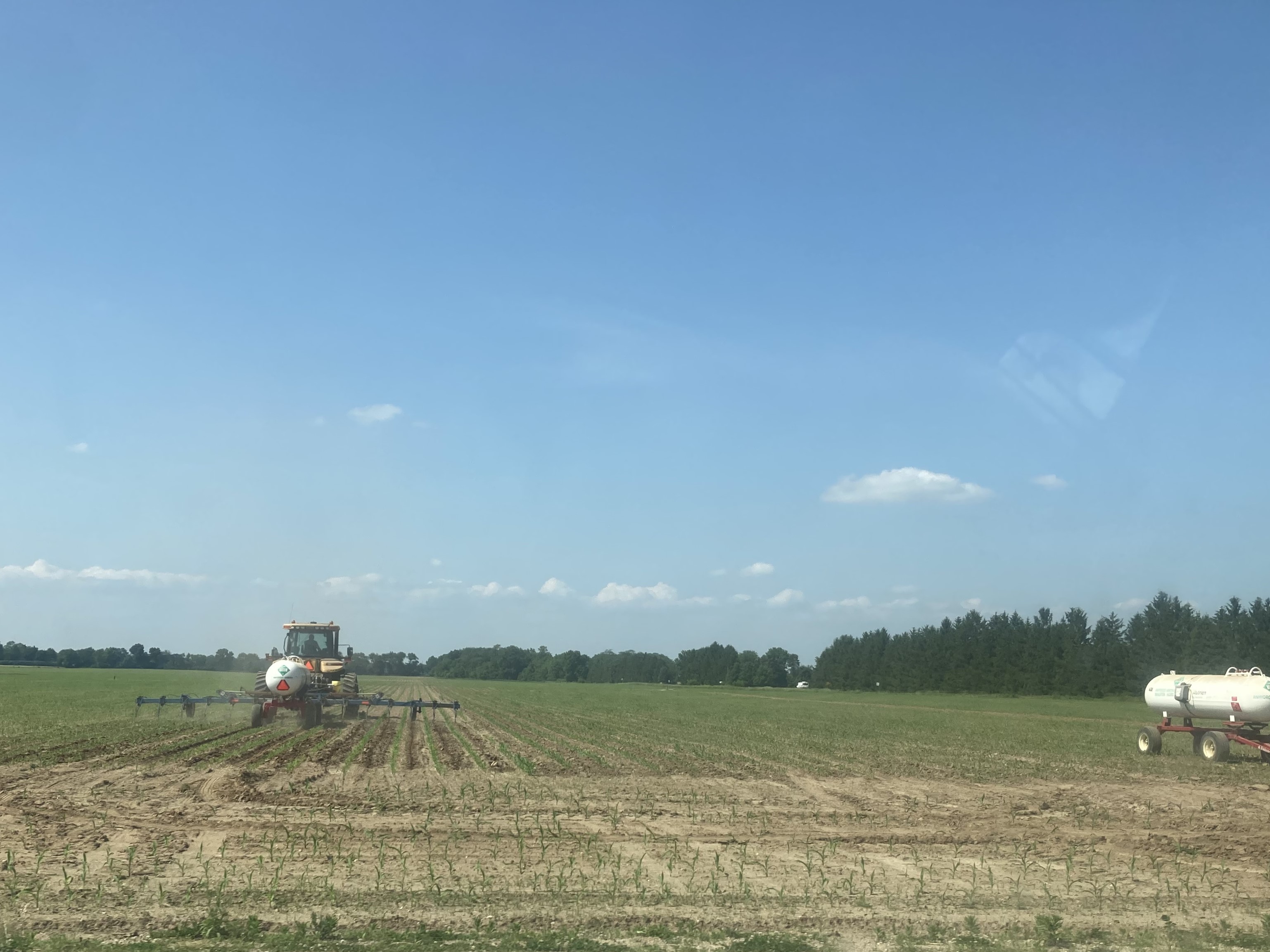
Winter wheat continues with kernel fill. At this point, carbohydrates are starting to transfer from leaf tissues to be stored as starch within the kernels. While dry weather has mostly kept fusarium risk lower, moisture is needed to complete kernel fill and maintain plants through the upcoming heat. After the recent storms, check wheat for lodging, and investigate if the lodging is in the roots or in the stems to be able to better manage it next year.

Several potatoes are at full flower, and many have closed rows or will close rows imminently.
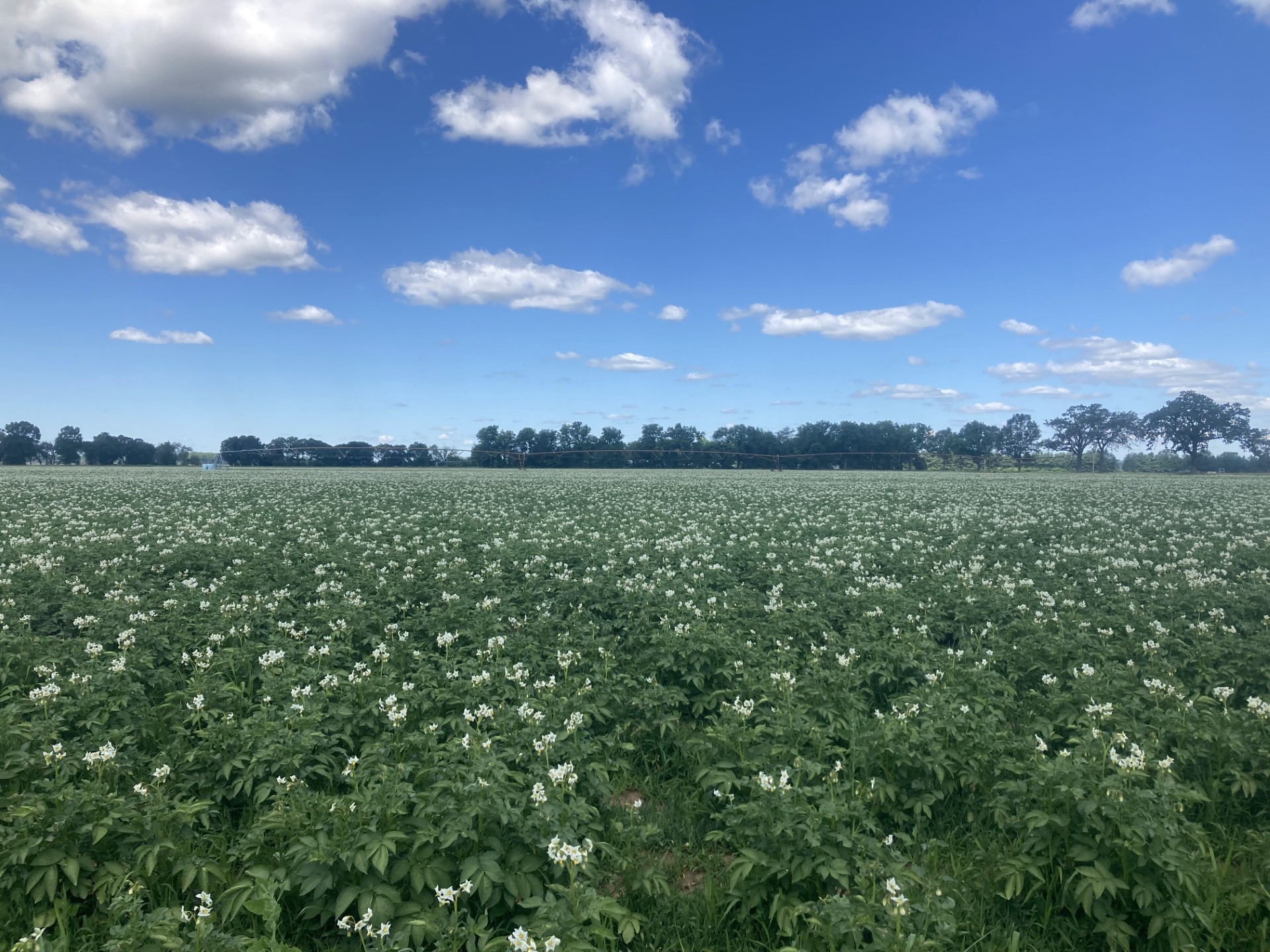
Potato leafhopper is present in southern Michigan. This is a significant pest for both potatoes and alfalfa and results in “hopperburn,” a V-shaped yellowing and eventual necrosis of leaves. Hopperburn becomes visible after the damage has already been done and cannot be treated.
Young alfalfa and new regrowth are especially vulnerable to potato leafhopper damage. “Potato leafhopper on alfalfa” from PennState Extension contains in-depth alfalfa scouting information and economic thresholds based on hay value and insecticide costs.
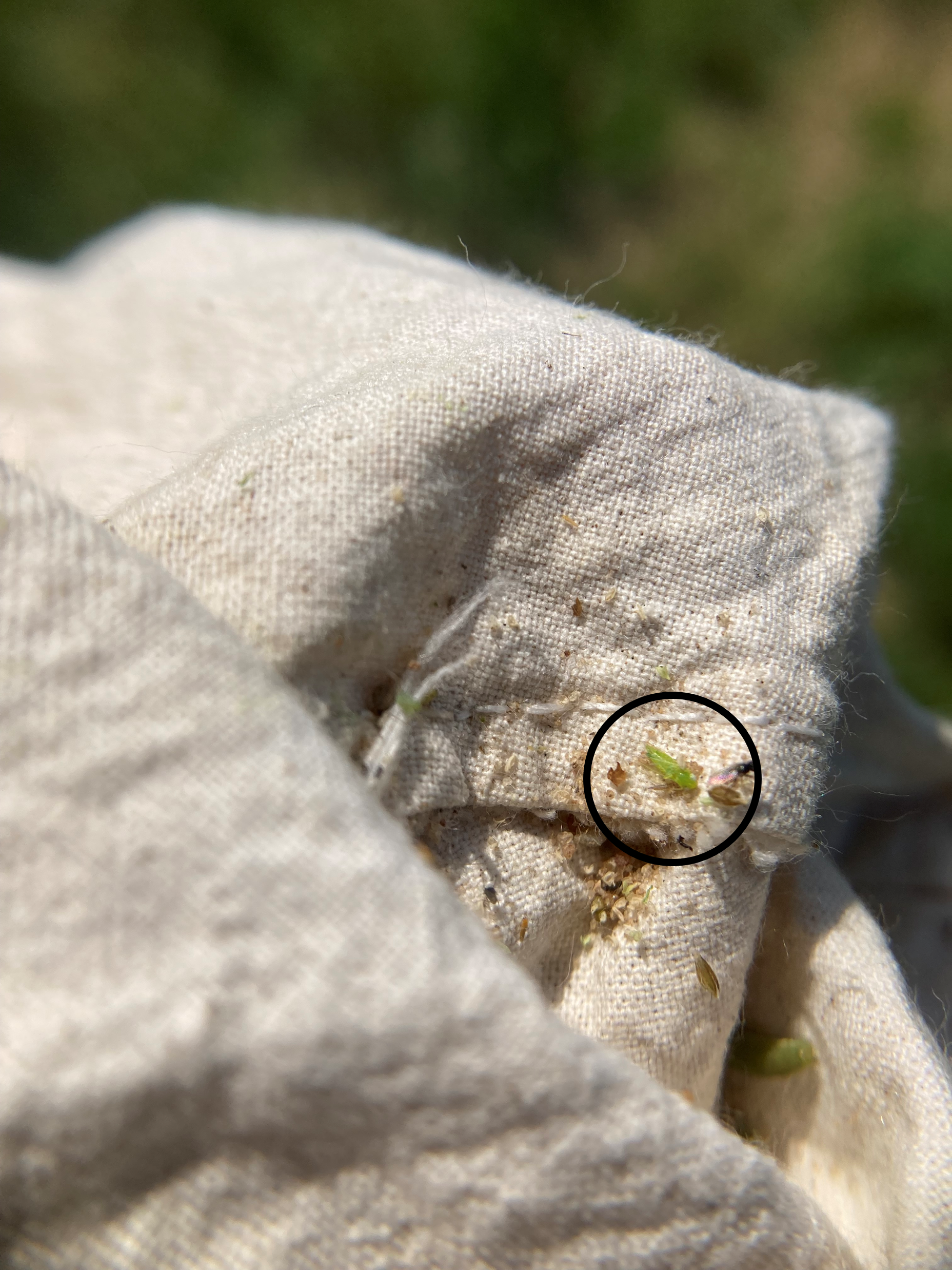
Weekly water use
Crop water use generally increased since last week. Next week’s demand is expected to be higher than normal due to a forecasted heat wave entering this weekend and continuing into early next week.
Estimated crop water use for corn is between 0.28 to 0.55 inches per day. Yesterday’s rainfall was timely, as it helped offset the dry conditions experienced earlier in the week. Continue monitoring moisture levels, especially in areas that did not receive enough rainfall.
Soybeans at the V3 growth stage are using 0.85 inches of water per week. As the crop progresses to later stages, water demand will rise to around 1 inch per week. Ensure adequate soil moisture is maintained within the active root zone.
Wheat is in the grain fill stage, requiring 1.50 inches of water per week, or about 0.21 inches per day. Warmer temperatures have significantly increased wheat’s water use, and this trend will continue into next week. Maintaining optimal soil moisture during grain fill is crucial for maximizing grain yield.
With the upcoming heat wave, it’s critical to closely monitor soil moisture and adjust irrigation strategies accordingly. Tools like Irrigation Scheduling Tools, can help estimate crop water needs and decide timing and application.
Estimated weekly crop water use for field crops in Michigan (inches/week) for the week of June 16-22, 2025
|
Crop |
Growth stage |
Constantine |
Entrican |
Hart |
|
|
Reference ET |
1.41 |
1.40 |
1.30 |
|
Corn |
V2 |
0.28 |
0.28 |
0.26 |
|
V4 |
0.28 |
0.28 |
0.26 |
|
|
V6 |
0.55 |
0.55 |
0.51 |
|
|
Soybeans |
V1 1st Node |
0.42 |
0.42 |
0.39 |
|
V2 2nd Node |
0.71 |
0.70 |
0.65 |
|
|
V3 3rd Node |
0.85 |
0.84 |
0.78 |
|
|
Wheat |
Jointing |
1.45 |
1.44 |
1.43 |
|
Boot / Heading / Flowering / Grain fill |
1.55 |
1.54 |
1.18 |
|
|
Soft Dough |
1.41 |
1.4 |
1.30 |
The table above presents estimated crop water use for various field crops across three locations in Michigan. This data helps irrigation management decisions by showcasing potential crop evapotranspiration, calculated based on reference evapotranspiration and crop coefficients for each crop growth stage. It is crucial to note that crop water use values vary across regions due to differences in weather conditions, growth stages, agronomic practices and soil properties.
When using these values for irrigation scheduling, be mindful that they assume all applied irrigation water will be utilized by the plants without any loss. Additionally, these values do not account for any precipitation that may occur during the week of calculation.
Reference evapotranspiration data was obtained from Michigan State University Enviroweather, which also offers a model for determining potential crop evapotranspiration. To access this tool, visit Enviroweather, click on "Crops," select your crop and use the potential evapotranspiration tool by choosing your nearest weather station, the latest date of interest and other crop information.
Field Crops Virtual Breakfast Series
.jpg?language_id=1)
Legacy phosphorus: The hidden driver of tile drainage loss, presented by Ehsan Ghane, was the topic for the MSU Extension Field Crops Virtual Breakfast Series this week. Studies found that about 80% of phosphorus lost through drainage is legacy phosphorus, or phosphorus built up from many previous fertilizer applications, not including the most recent one. Only about 20% of phosphorus lost was due to new phosphorus, or phosphorus from the most recent fertilizer application.
Recordings of this and all the Virtual Breakfast meetings are closed-captioned and available at the Field Crops Virtual Breakfast webpage and the MSU Extension Field Crops Team social media platforms: Facebook, Spotify, YouTube, Apple Podcasts, and Twitter @MSUExtension.
Recordings of this and all the Virtual Breakfast meetings are closed-captioned and available at the Field Crops Virtual Breakfast webpage and the MSU Extension Field Crops Team social media platforms: Facebook, Spotify, YouTube, Apple Podcasts and Twitter/X.
This work is supported by the Crop Protection and Pest Management Program [grant no 2024-70006-43569] from the USDA National Institute of Food and Agriculture. Any opinions, findings, conclusions, or recommendations expressed in this publication are those of the author(s) and do not necessarily reflect the view of the U.S. Department of Agriculture.



 Print
Print Email
Email